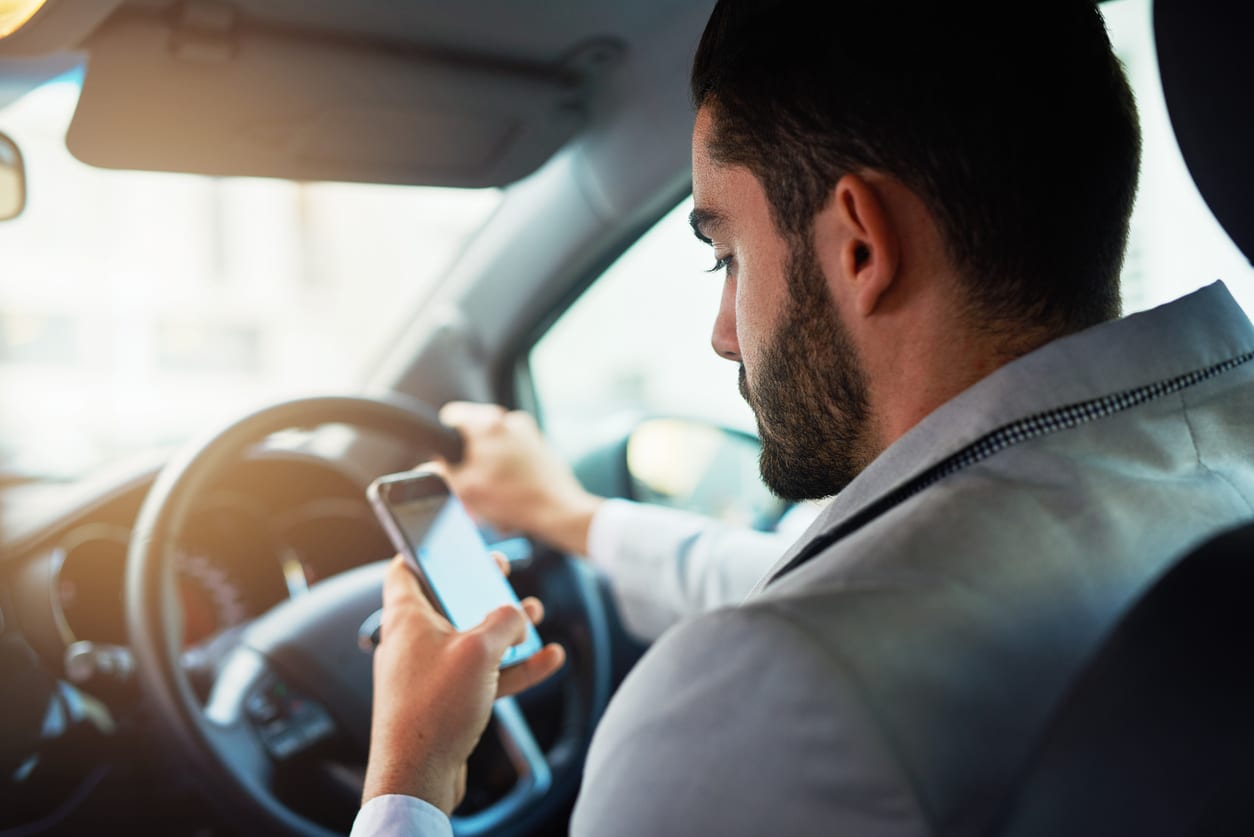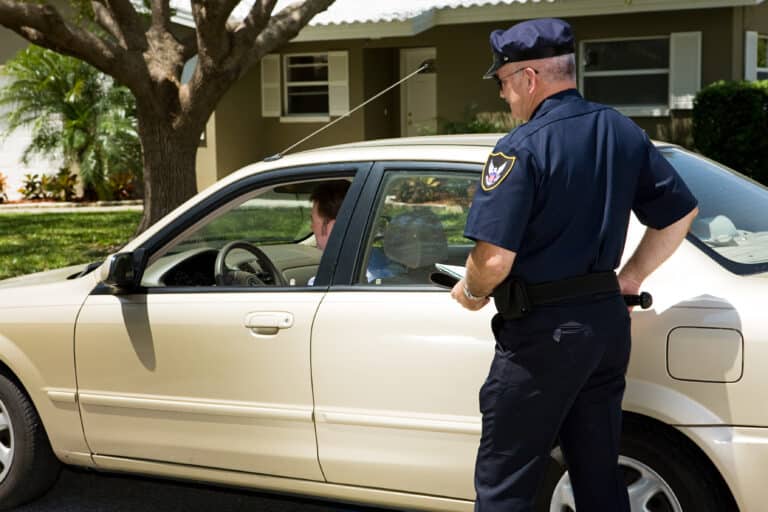When I started my career in law enforcement in the early 1990s, cell phones were just beginning to get smaller in size and more people were starting to use them. Around that time, we began to see motorists on their cell phones while driving. So lawmakers made it illegal to call—and later text—when driving.
When the laws first came out, it was easy to enforce. Even today, you can spot a person with their cell phone to their ear from a long distance. It’s harder to see a person texting, but cops know what to look for. That said, you have to know what police can and cannot use as evidence that you were texting.
1. Police Need to Be Sure of the Violation
An officer should not be issuing a ticket for any offense unless he or she can support it in court. You have to be 100 percent sure that a person committed the violation. For example, noticing that someone is looking down at their lap repeatedly with one hand off the wheel isn’t good enough.
An officer needs to see the cell phone in hand. Otherwise, it will never hold up in court.
Think about other actions that might cause people to look down while driving. They could be wiping a coffee spill off their pants or rummaging through the center console. Although it is always unsafe to take your eyes off the road, these things are not illegal.
2. Police Can’t Search Your Phone Without a Warrant
An officer who accuses you of texting cannot demand to see your phone. Even when you’re under arrest, police need a warrant to see the contents of your phone, whether it’s texts, calls, photos, or anything else.
3. It’s Easier to Spot Texting at a Red Light
Can you text at a red light? Technically, yes (unless you hold a CDL). But does that mean you won’t be ticketed? No. Again, the officer needs to see the device in your hand for the conviction to stick. That’s easier to do if the car is stopped at a light or stuck in slow-moving traffic.
It’s much harder to tell if people are texting while cars are moving at most speed limits. That’s not an endorsement of texting at high speeds; the faster you’re moving, the more of the road you miss when your eyes are on that device. And the faster you’re moving, the more dangerous an accident caused by texting can be.
4. Your Cell Phone and Bill Aren’t Always Airtight Defenses
I have heard that some people charged with texting will bring their cell phone or cell phone bills to court as evidence. They will then show that there was no time stamp on the bill or outgoing text around the time of the traffic stop. But that evidence may not be enough. The judge has no way to confirm that the bill presented isn’t for a second phone that you are paying for, or that the text wasn’t deleted from the phone itself prior to the court date. And, even if no text messages were sent, that doesn’t mean you weren’t using your phone for some other reason, and that is also illegal.
5. The Latest Mobile Technology Isn’t Necessarily Helping
Nowadays, cars and phones have the technology to read texts out loud to people, as well as take dictation and send messages on command. Does that count as texting? It’s kind of a gray area. For the most part, it depends on if the person was touching the device or not.
But is it a distraction? Definitely! And any distraction can potentially cause an accident. Drivers need to think about this before using this newest technology while on the road. After all, there are about 80,000 to 90,000 accidents each year in New York State that are caused by a driver who is distracted by something. Some of these distractions can be attributed to perfectly legal things, such as eating a cheeseburger or handing something to your kids in the backseat. But the percentage of these crashes caused by cell phone use has been steadily increasing.
The bottom line is that, if you don’t want a ticket for texting, don’t do it. Not to sound cliché, but most of the time that text can wait.





